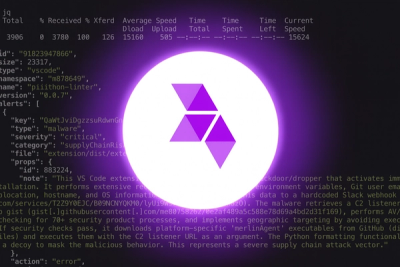
Product
Introducing Socket Scanning for OpenVSX Extensions
Socket now scans OpenVSX extensions, giving teams early detection of risky behaviors, hidden capabilities, and supply chain threats in developer tools.
@mythologi/react-native-static-server
Advanced tools
A cross platform component for serving static assets with React Native.
$ npm install react-native-static-server --save
From react-native 0.60 autolinking will take care of the link step but don't forget to run pod install
$ react-native link react-native-static-server
Declare the StaticServer with a port or use the default 0 to pick a random available port.
import StaticServer from 'react-native-static-server';
let server = new StaticServer(8080);
// Start the server
server.start().then((url) => {
console.log("Serving at URL", url);
});
// Stop the server
server.stop();
// Check if native server running
const isRunning = await server.isRunning()
// isRunning - true/false
StaticServer serves from the document directory (default) or takes an optional absolute path to serve from.
For instance, using react-native-fs you can get the document directory and specify a directory from there.
import StaticServer from 'react-native-static-server';
import RNFS from 'react-native-fs';
// create a path you want to write to
let path = RNFS.DocumentDirectoryPath + '/www';
let server = new StaticServer(8080, path);
Create a folder in your project's top-level directory (usually next to your node_modules and index.js file), and put the files you want to access over http in there.
This folder must be added to XCode so it gets bundled with the app.
In XCode, Project Navigator right click in the folder project → Add files to "<project>" → Select the static folder and clic options (Uncheck copy items if needed, Create folder references) so don't duplicate files → Clic Add.
When the app gets bundled, this folder will be next to the compiled app, so using MainBundlePath property from react-native-fs you can access to the directory.
import StaticServer from 'react-native-static-server';
import RNFS from 'react-native-fs';
// path where files will be served from (index.html here)
let path = RNFS.MainBundlePath + '/www';
let server = new StaticServer(8080, path);
If the server should only be accessible from within the app, set localOnly to true
import StaticServer from 'react-native-static-server';
// Just set options with defaults
let server = new StaticServer({localOnly : true });
// Or also valid are:
let server = new StaticServer(8080, {localOnly : true });
let server = new StaticServer(8080, path, {localOnly : true });
If the server should not pause when the app is in the background, set keepAlive to true
let server = new StaticServer({keepAlive : true });
Passing 0 as the port number will cause a random port to be assigned every time the server starts.
It will reset to a new random port each time the server unpauses, so this should only be used with keepAlive.
let server = new StaticServer(0, {keepAlive : true });
Thanks to CorHttpd and react-native-httpserver for the basis of this library.
FAQs
HTTP static file server for React Native
We found that @mythologi/react-native-static-server demonstrated a not healthy version release cadence and project activity because the last version was released a year ago. It has 1 open source maintainer collaborating on the project.
Did you know?

Socket for GitHub automatically highlights issues in each pull request and monitors the health of all your open source dependencies. Discover the contents of your packages and block harmful activity before you install or update your dependencies.

Product
Socket now scans OpenVSX extensions, giving teams early detection of risky behaviors, hidden capabilities, and supply chain threats in developer tools.

Product
Bringing supply chain security to the next generation of JavaScript package managers

Product
A safer, faster way to eliminate vulnerabilities without updating dependencies